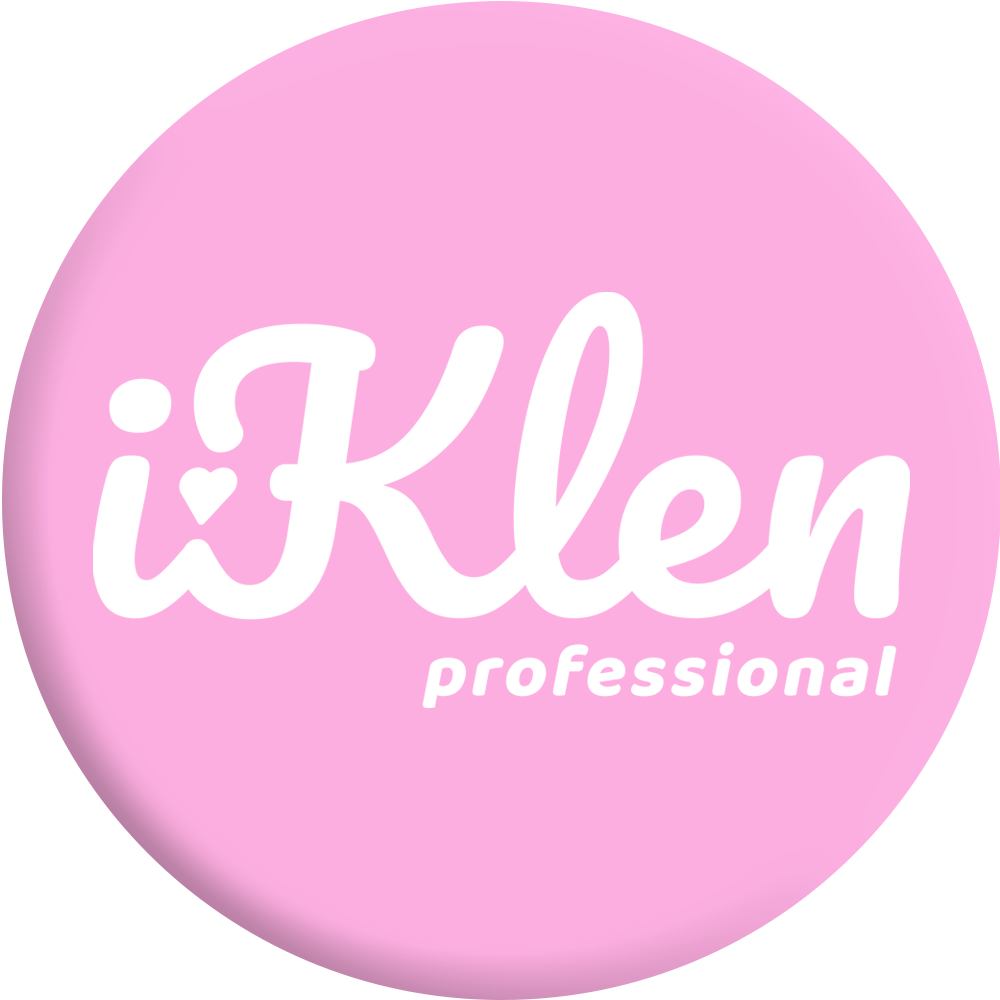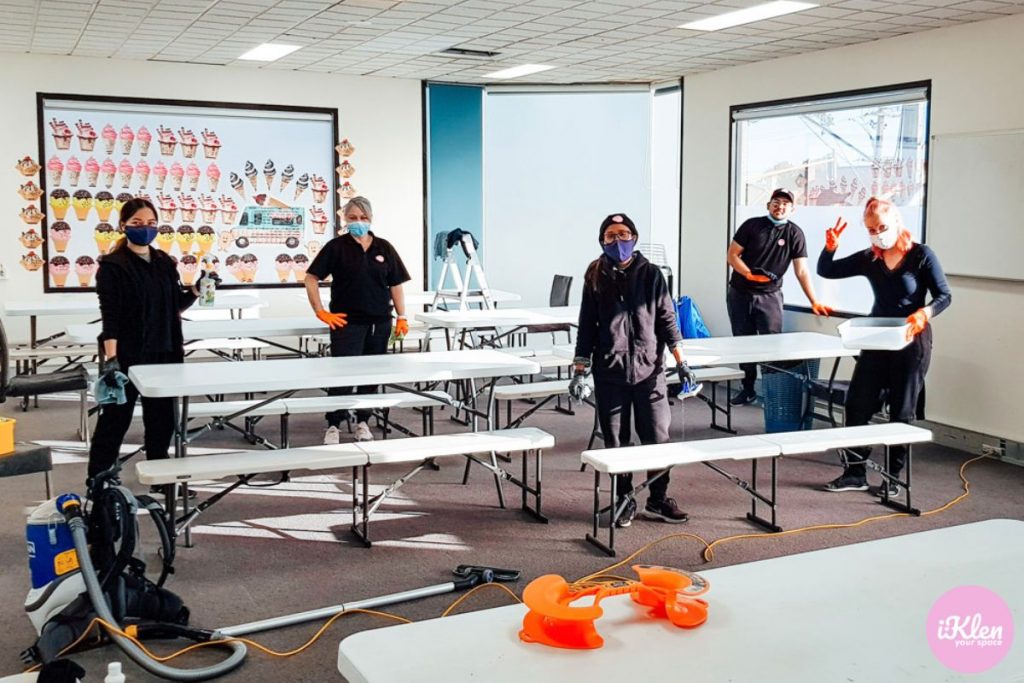Maintaining a clean and safe environment in childcare settings isn’t just about wiping down surfaces and keeping the play area tidy. It extends to the meticulous care of equipment storage areas, crucial spaces often overlooked.
Our team at iKlen has been providing professional childcare cleaning services for many years now and we understand the challenges that come with ensuring these areas are not only organized but also meet the highest standards of cleanliness and safety. It’s a daunting task, especially considering the potential risks to health, including musculoskeletal disorders (MSDs) among employees, and the hazards posed by improperly stored dangerous goods.
Our guide aims to simplify this process, offering step-by-step instructions that align with the Occupational Health and Safety Act and Regulations. We’ll walk you through creating a comprehensive cleaning procedure, from identifying every piece of equipment that needs attention to detailing the frequency and methods of cleaning. By the end of this article, you’ll have a clear blueprint for maintaining a safe, healthy, and welcoming environment for children, staff, and visitors alike. Let’s embark on this journey together, ensuring our childcare facilities are as clean and secure as they can possibly be.
Understanding the Basics
In the context of childcare, the emphasis on maintaining a clean environment cannot be overstated. It stands as a foundational principle that supports the health and safety framework of any childcare setup.
The Importance of Cleanliness in Childcare Environments
A spotless childcare environment plays a crucial role in safeguarding the wellbeing of children, staff, and visitors alike. By rigorously cleaning, we not only contribute to creating a visually appealing space but also minimize the spread of germs and diseases. This practice promotes a healthy, nurturing environment where children can play, learn, and grow without the concern of health hazards.
Difference Between Cleaning, Sanitizing, and Disinfecting
Let’s get down to brass tacks. Cleaning, sanitizing, and disinfecting are three peas in a pod, yet each dances to its own tune. Cleaning removes visible dirt and debris, making way for a more effective sanitization and disinfection process.
Sanitizing goes a step further by reducing the number of bacteria on surfaces to a safe level, as determined by public health standards.
Disinfecting, on the flip side, kills the majority of bacteria and viruses on surfaces by using chemicals, ensuring an even higher level of germ-free safety. Recognizing the distinction between these actions empowers us to apply them correctly and maintain an impeccably clean childcare environment.
Preparing to Clean
Cleaning equipment storage areas in childcare centers is crucial. We focus on efficiency and thoroughness.
Materials and Tools Needed
Gather gloves, masks, and protective eyewear to safeguard against dust and cleaning agent fumes. For the cleaning itself, assemble disinfectant wipes, sprays tailored for childcare environments, microfiber cloths, and a vacuum cleaner with HEPA filter for best results. Ensure to have clearly labeled containers for organizing cleaning tools, making the process smoother and preventing any mix-ups.
Safety Precautions for Cleaning Agents
Select cleaning agents approved for use in areas frequented by children. These should be non-toxic and free from harsh chemicals that can pose health risks. Before using any product, review its instructions to confirm its suitability and understand its correct application. Keep all cleaning agents in a secure location, out of reach of children, to prevent accidental ingestion or contact.
Cleaning Process Overview
In tackling the task of cleaning equipment storage areas in childcare settings, our focus shifts to creating a safe and healthful environment through effective cleaning methods. Let’s dive into the specific practices that will keep these areas in top shape.
Daily Cleaning Practices for Equipment Storage Areas
Prioritizing daily cleaning tasks ensures that storage areas remain clutter-free, safe, and hygienic. Start each day by wiping down all surfaces, including shelves, bins, and handles, with disinfectant wipes approved for use in childcare environments. This step removes dust, germs, and potential allergens, contributing to a healthier space.
Next, inspect the area for any items that are out of place or no longer in proper condition. Dispose of broken or damaged materials promptly and safely. This daily routine prevents the buildup of dirt and debris, making more comprehensive weekly cleanings more manageable.
Organizing the Storage Area Before Cleaning
A well-organized storage area simplifies the cleaning process. Begin by removing all items from shelves and bins. This exposes hidden areas that can harbor dust and germs, ensuring no spot is overlooked during cleaning. Sort through the removed items, categorizing them as you go. This is the perfect opportunity to inventory materials, identify items in need of repair or replacement, and re-evaluate the organization system.
After cleaning the empty storage area thoroughly, return items in an orderly manner, focusing on maximizing accessibility and efficient use of space. Keep heavier items lower to reduce risk, and ensure frequently used items are easily reachable. Establishing and maintaining this organization greatly aids in keeping the area consistently clean and functional.
Deep Cleaning Techniques
In childcare environments, thoroughness in cleaning is key. Let’s dive into some effective strategies for maintaining cleanliness in these critical areas.
Cleaning and Disinfecting Toys and Equipment
First, gather all toys and equipment for a comprehensive cleaning session. Use a two-step process: cleaning to remove any dirt or debris, followed by disinfecting to eliminate germs. Use water and mild soap for cleaning, then apply an EPA-approved disinfectant for childcare settings. Ensure every item is air-dried completely before returning it to storage. For electronic toys, use disinfectant wipes carefully to avoid moisture entering any openings.
See more: How to clean art and craft supplies in childcare
Handling and Storing Hazardous Cleaning Materials
Safety first, always. Store all cleaning agents, especially those hazardous if ingested or inhaled, in a secured area out of children’s reach. We recommend using a lockable cabinet, labeled clearly with the contents and hazard warnings.
Additionally, maintain an inventory of these materials to track usage and replenish supplies effectively without overstocking. Always wear protective gear when handling these materials, including gloves and masks, to protect your skin and respiratory system.
Scheduling Regular Cleanings
Maintaining cleanliness in childcare equipment storage areas demands a strategy. Let’s establish a plan that keeps these spaces spotless and safe.
Creating a Childcare Cleaning Schedule
First, grab a calendar dedicated to cleaning tasks. Part of effective management involves identifying what needs attention and when.
Assign different colors for daily, weekly, and monthly chores, making this schedule visually simple to follow. Include specifics: detergents, sanitizers, and equipment required for each task. By attaching names or teams to each task, accountability becomes part of the process.
Daily, Weekly, and Monthly Cleaning Tasks
For daily tasks, focus on surfaces children and staff frequently touch. These include doorknobs, light switches, and storage bins. Weekly tasks may well involve a thorough cleanse of storage shelves and checking the condition of toys and equipment.
Monthly duties require attention to less obvious spots, like the corners of storage rooms and high shelves. Safety checks for any potential hazards, such as loose bolts or sharp edges on storage units, should coincide with these deeper cleaning efforts. This layered approach prevents the accumulation of dirt and ensures a high standard of hygiene.
Troubleshooting Common Issues
Sometimes, despite our best efforts, cleaning equipment storage areas can present a few head-scratchers. Here’s how we tackle the more persistent problems.
Dealing with Stubborn Stains and Odors
Stains that refuse to budge and odors that linger can be a real pain. Start by applying a mix of baking soda and water to tackle these stubborn spots. For odors, ensure airflow by opening windows, then use a vinegar solution as an effective, natural deodorizer.
If stains persist, a gentle bleach solution may well be the answer, but always spot test first. Essentially, combine patience with a bit of elbow grease, and those nuisances will meet their match.
Safe Storage Solutions for Cleaning Supplies
Storing cleaning supplies safely is non-negotiable. First off, lock them up. A secure cabinet, out of reach from curious little hands, is ideal. Second, clearly label everything. If a bottle’s original label wears off, slap on a new one with big, bold letters.
Lastly, keep those materials in a cool, dry place to prevent any chemical mishaps. Following these steps not only protects the children and staff but also helps in maintaining an organized and efficient cleaning routine.
See more:

